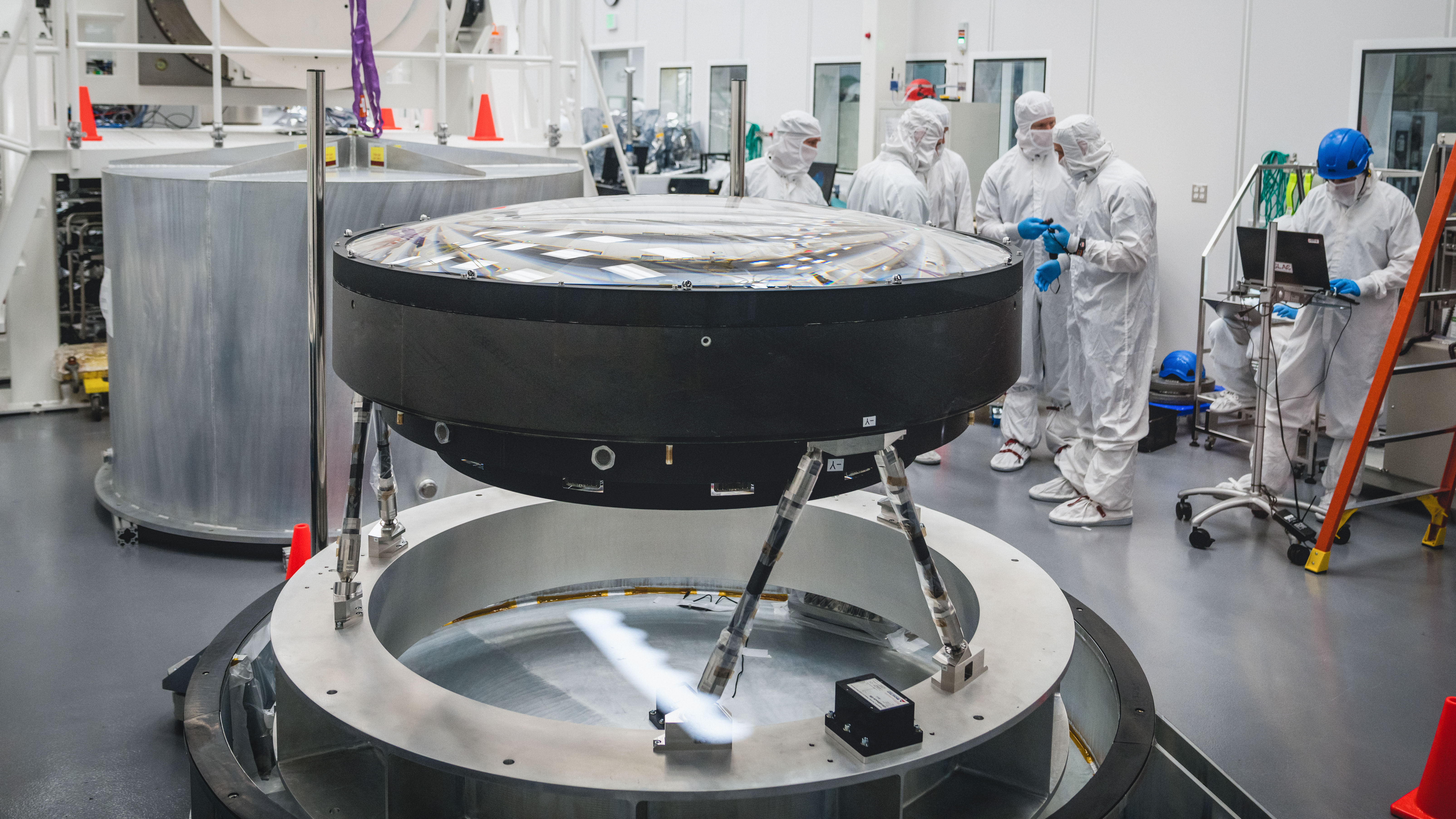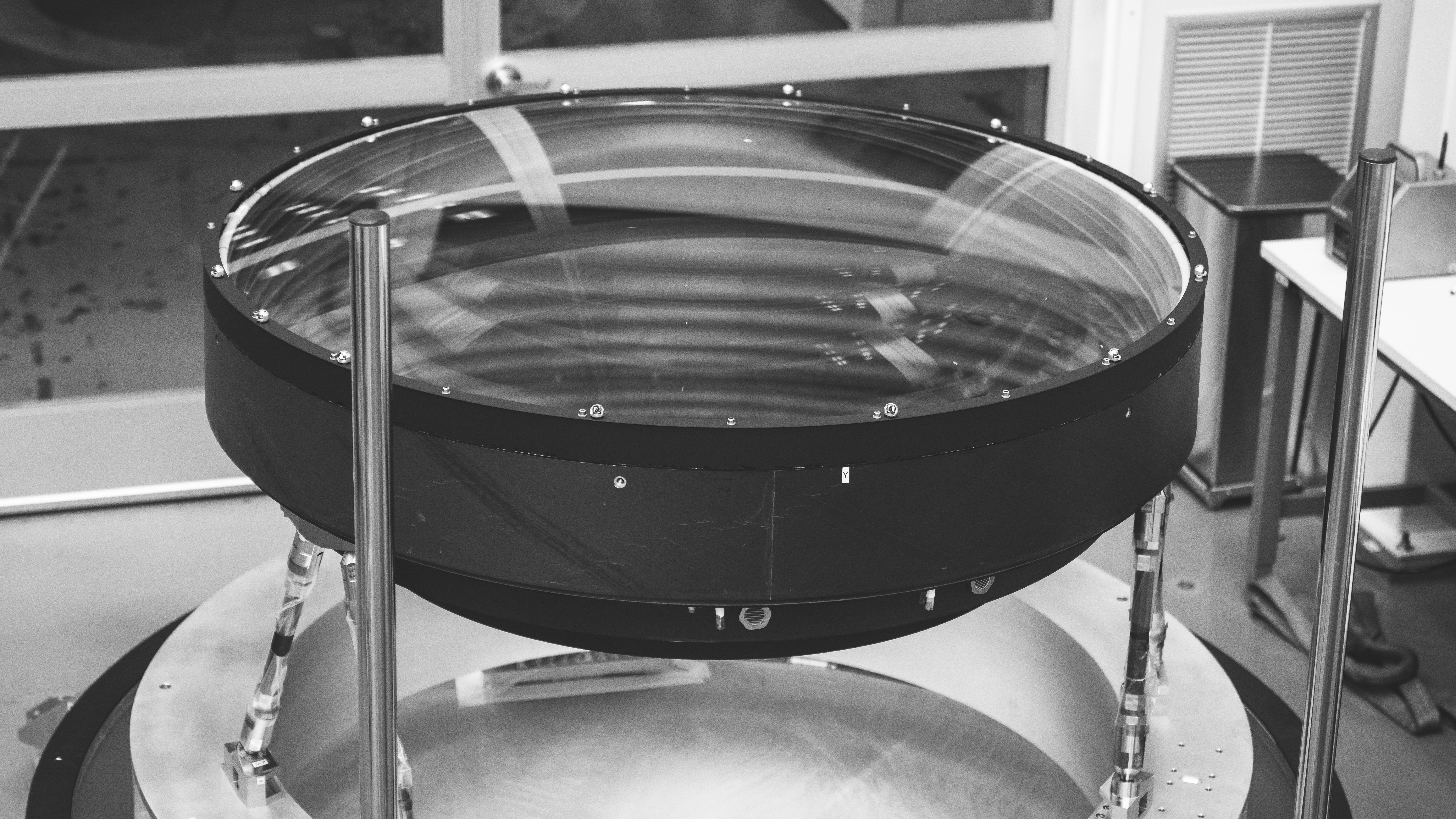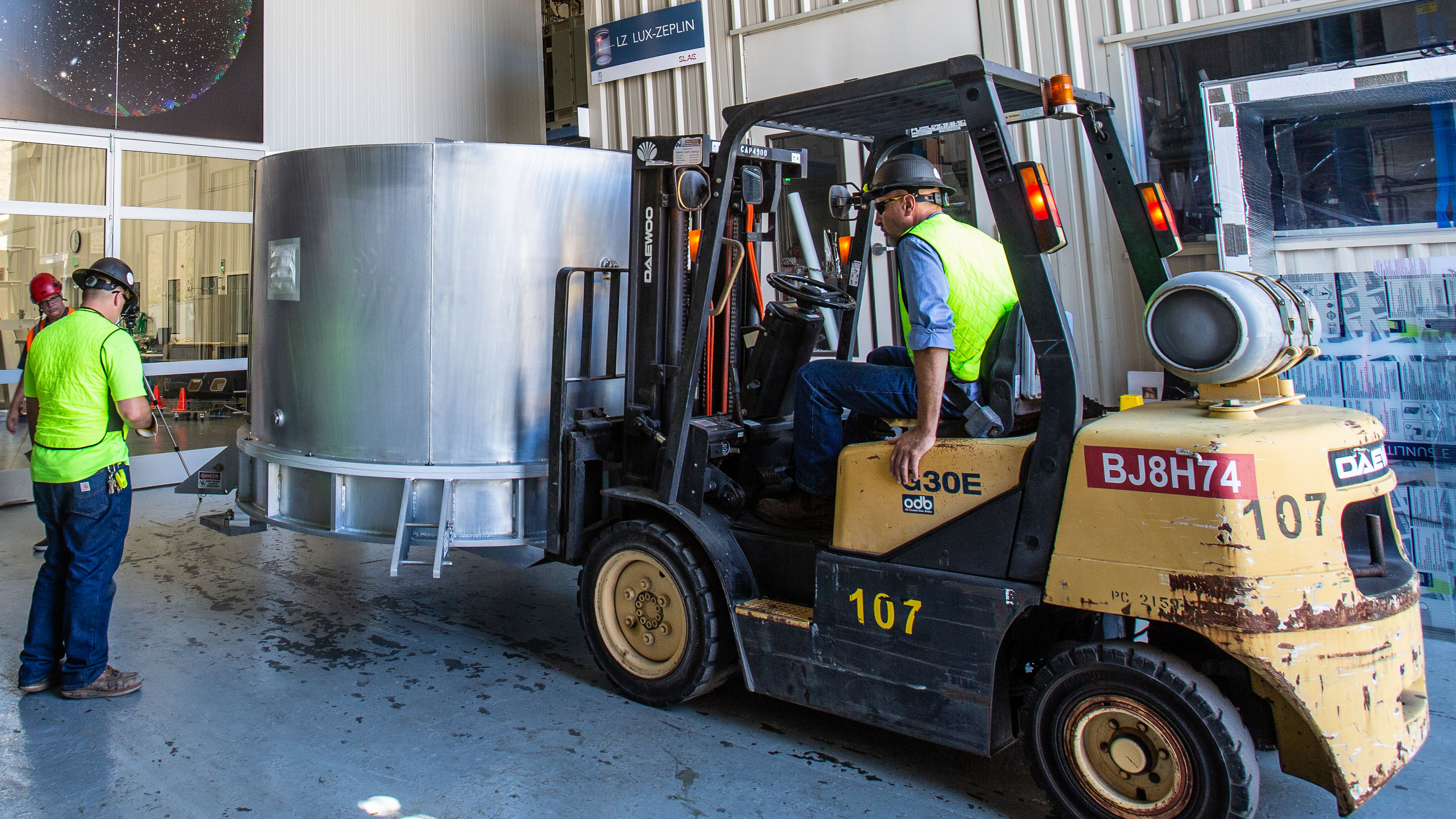The world's biggest photographic lens is massive… and this is what it looks like
Five foot wide monster lens will be the eyes of 3.2 Gigapixel camera in Large Synoptic Survey Telescope

The main lens for the telescope measures five feet across
(Image credit: SLAC)Pictures of what are claimed to be the largest-ever photographic lens have been released... and it sure is a whopper. The lens measures 1.57 meters, or 5.1 feet, in diameter and has been designed for use at the Large Synoptic Survey Telescope (LSST), which is currently being constructed in Chile, where it will be mounted in front a camera with a 3,200 megapixel sensor.
Called L-1, the lens is currently at SLAC, the Stanford Linear Accelerator Center, in California, which is assembling the super-resolution camera for the telescope. The lens is mounted with a smaller companion lens (1.2 meters / 3.9 feet in diameter) in a carbon fiber structure. Both lenses have been designed by the Lawrence Livermore National Laboratory (LLNL), and have been built over the past five years by Boulder, Colorado-based Ball Aerospace and Technologies Corp. and its subcontractor, Tucson-based Arizona Optical Systems.
The camera is budgeted to cost $168 million and is more than 90 percent complete; it is due to be finished by early 2021. A third and final lens is due to be delivered to SLAC in the next few weeks.
The 8.4-meter LSST telescope will take digital images of the entire visible southern sky every few nights. During a 10-year time frame, LSST is expected to detect about 20 billion galaxies — observing more galaxies than there are people on Earth – and will create a time-lapse movie of the sky.
This data is designed help researchers better understand dark matter and dark energy, which together make up 95 percent of the universe, but whose makeup remains unknown, as well as study the formation of galaxies, track potentially hazardous asteroids and observe exploding stars.
The telescope’s camera — the size of a small car and weighing more than three tons — will capture full-sky images at such high resolution that it would take 1,500 high-definition television screens to display just one picture.
Read more
The best camera deals, reviews, product advice, and unmissable photography news, direct to your inbox!
• Astrophotography tools: the best gear for shooting the night sky
• The best telescopes for astrophotography
• The best CCD cameras for astrophotography

Chris George has worked on Digital Camera World since its launch in 2017. He has been writing about photography, mobile phones, video making and technology for over 30 years – and has edited numerous magazines including PhotoPlus, N-Photo, Digital Camera, Video Camera, and Professional Photography.
His first serious camera was the iconic Olympus OM10, with which he won the title of Young Photographer of the Year - long before the advent of autofocus and memory cards. Today he uses a Sony A7 IV, alongside his old Nikon D800 and his iPhone 15 Pro Max.
He is the author of a number of books including The Book of Digital Photography, which has been translated into a dozen different languages.
In addition to his expertise in photography and videomaking, he has written about technology for countless publications and websites including The Sunday Times Magazine, The Daily Telegraph, What Cellphone, T3 and Techradar.


